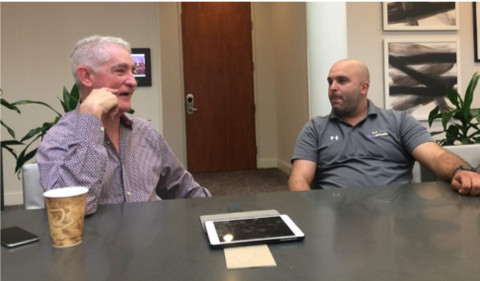Drone Ranger Blog: Tips on Holding a Successful Drone STEM Camp
Ron Poynter, president of OnPoynt Drone Solutions, interviews Matt Bogusz, owner of Club SciKidz quadcopter aerial robotics (drone) STEM camp.
Club SciKidz hosts drone camps in the Maryland and Virginia area, and was an early adopter; offering drone camps five years ago. Club SciKidz uses the STEM Ranger Drone. It can be built and rebuilt as well as repaired on the spot. The STEM Ranger has altitude and distance limitations safety features.
After each summer, they send equipment back to OnPoynt for repairing, reconditioning and upgrades. Club SciKidz has used the same equipment for the past five years. The ratio of students per drone is four to one, with various activities conducted in teams. The staff is trained in how to build, configure and safely fly the drone.

Club SciKidz emphasis safety, a team approach and scenarios STEM activities. To see the full interview, click here. Meanwhile, here are some highlights:
Q: What do the students learn in the camp?
A: The kids learn robotics, the safety, how to work in teams, how to build and fly the drones and learn how the GPS [of the drone] works. So, in our camps, we actually start off with the introduction to robotics and robots. But then we specifically talk about the drones and how they are used and how they might be used in the future.
Q: How many students do you recommend for a drone camp?
A: Twelve students is the best for maintaining a good staff to student ratio so that the students get individual attention from the instructors. Students work in teams of six with assigned roles.
Q: Tell us about training.
A: The instructors are specifically trained on how to operate the drones so they're not going into the camp blind. With other camps, you can do that, you can give a (quick) lesson and they can do it, but with a drone, they've got to know how to build it, how to fly it, they have to know the safety.
Q: Tell us about how you use your best practices and what you do with them when your students are flying drones outside.
A: The most important [objective] to us is the safety of the students. [OnPoynt] has a nice PowerPoint that we use that talk about all the safety rules before we go outside. We use safety and a team approach. The kids understand their roles: they wear the vests, have different jobs that each of them hold and they rotate between these roles. There's never only one person flying the drone. We have the spotter and the teacher is always in control. The kids know that they use two hands on the controller. They have the lanyards on them so that they don't drop [the controller]. The instructor goes through how to setup the parameters on the drones, so we don't lose the drones.
Q: What STEM scenario(s) do use use
A: I taught a program during the school year where I had the kids engineer a basket underneath the drone, and we put a water balloon in there so we can simulate a fire. I made a ring on the ground outside the school, and they had to try and release [the water balloon] with the gimbal into that target to put out a pretend fire. That was actually a lot more challenging than I had thought it would be because when we put the water balloon in first, it put the drone off balance, so [the students] had to come up with a way to keep it in the center and be able to release all the water at the same time.
- Anindita Palit

Comments 0